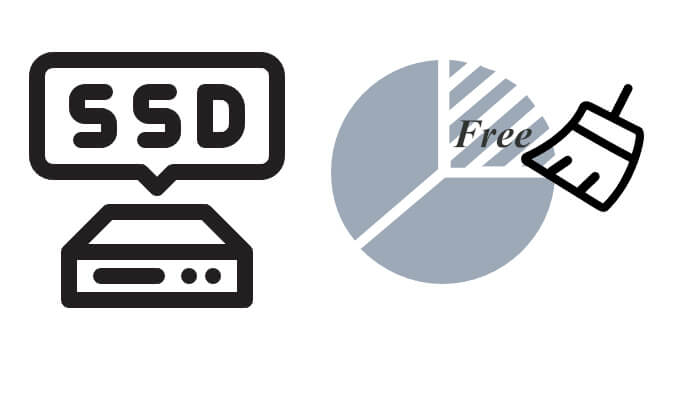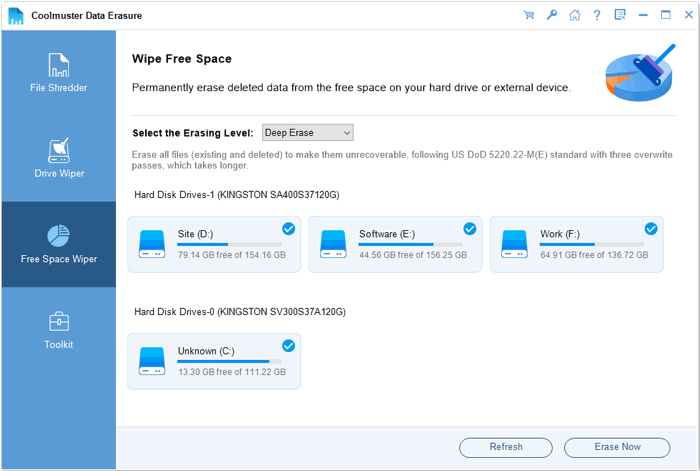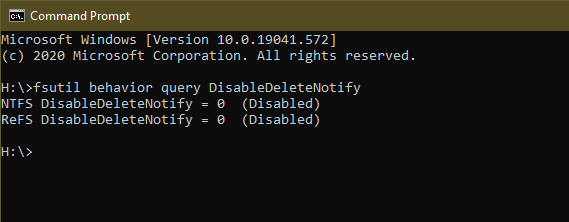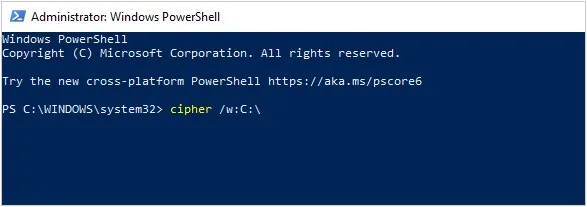When using an SSD (Solid State Drive), many users may encounter an issue: after deleting files, the data might still be recoverable. This is because the delete operation typically does not actually erase the data but merely marks it as available space. So, can you wipe free space on an SSD? How to wipe free space on SSD to prevent data from being recovered? Read this article to find the answer.

One of the simplest and most reliable ways to erase free space on an SSD is by using specialized data erasure tools, such as Coolmuster Data Erasure. It not only permanently deletes data from the entire SSD but also cleans up the free space occupied by deleted files, ensuring that the data cannot be recovered. At the same time, this software will not cause additional wear on the SSD.
Key features of Coolmuster Data Erasure:
Here is how to wipe free space on SSD on Windows using Data Erasure:
01After downloading the SSD wiper, install it on your PC. Launch the program and select the "Free Space Wiper" option from the left menu.
02Choose your SSD and select an erasure level from the available options.

03Click "Erase Now" and confirm by selecting "OK" in the pop-up window. The software will begin wiping the free space on your selected SSD, overwriting all deleted data.

Video Tutorial:
The TRIM command can notify the SSD to erase unused data blocks, thereby speeding up read and write operations and preventing data recovery. Typically, Windows 10 and later versions enable TRIM automatically, but you can also run the TRIM command manually.
Here is how to wipe free space on SSD using TRIM:
Step 1. In the Windows search box, type "cmd", right-click on "Command Prompt", and select "Run as administrator".
Step 2. Type "fsutil behavior query DisableDeleteNotify" and press "Enter".
Step 3. If the return value is "0", it means TRIM is enabled, and no further action is needed. If the return value is "1", you can manually enable TRIM by typing "fsutil behavior set DisableDeleteNotify".
Step 4. Once TRIM is enabled, the SSD will automatically clear free space.

Cipher is a built-in command-line tool in Windows primarily used for encrypting files, but it can also be used to wipe free space on an SSD. It works by filling unused space with zeros, making deleted data unrecoverable.
Here is how to wipe free space on SSD with Cipher:
Step 1. In the Windows search box, type "cmd", then right-click and select "Run as administrator".
Step 2. In the Command Prompt, type "cipher /w:C" and press "Enter". (Replace C: with your SSD partition. If your SSD is D:, use cipher /w:D instead.)
Step 3. Cipher will automatically fill the SSD's free space. The process may take a long time, so please be patient.

Q1. Why do I need to wipe free space on an SSD?
Wiping free space on an SSD ensures that deleted files cannot be recovered. This is useful for protecting sensitive data before selling or disposing of a device.
Q2. Can wiping free space on an SSD lead to data loss?
Wiping free space is intended to affect only deleted or "free" space, leaving existing data untouched. However, to prevent accidental data loss due to errors or software issues, it's always a good idea to back up your important files before performing any disk management tasks.
Q3. Does formatting an SSD erase all data permanently?
No, quick formatting does not securely erase data. To ensure complete data removal, we recommend using Secure Erase tools provided by SSD manufacturers or the Coolmuster Data Eraser we mentioned in Part 1.
Wiping free space on an SSD is essential for protecting privacy and preventing data recovery. Among various methods, Coolmuster Data Erasure is the most recommended tool, as it securely erases free space without affecting the SSD's lifespan. Additionally, enabling TRIM is an efficient solution for SSDs that support it. If you don't mind a longer process, you can also use the built-in Cipher tool in Windows to wipe free space. Choose the method that best suits your needs to ensure data security!
Related Articles:
How to Reset Hard Drive in Windows 11/10? Solved in 4 Secure Ways
HDD Secure Erase: How to Securely Erase HDD in 2 Safe Ways
How to Erase USB Drive Completely? 3 Effective Methods Inside!





